Friuli-Venezia Giulia
Any border region is bound to have a complicated past, and Friuli-Venezia Giulia is no exception – but this region packs more complicated punch into a small area than you might expect.
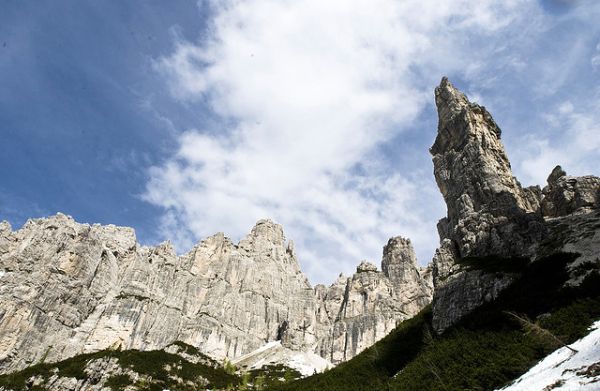
Friuli-Venezia Giulia is Italy’s most northeast region, off to the right on the map where Italy spreads out into continental Europe. It’s an oddly-shaped region, with the bulk of it seeming connected to the rest of Italy – except for one little spit of land that’s almost entirely surrounded by Slovenia.
The region of Friuli-Venezia Giulia is one of Italy’s smallest, and yet also one of the country’s most complex. Its history involves lots of back and forth with neighboring countries, and there’s not just a local dialect but a distinct language separate from Italian (and on most signage throughout the region). Despite its proximity to Venice (one of Italy’s most popular tourist destinations), Friuli-Venezia Giulia remains largely un-touristed, making it even more enjoyable to the intrepid traveler.
This page has an overview of basic travel information for Friuli-Venezia Giulia, including links to other resources here on WhyGo Italy to help you plan your trip to Friuli-Venezia Giulia. Please let me know if you have trouble finding what you’re looking for.
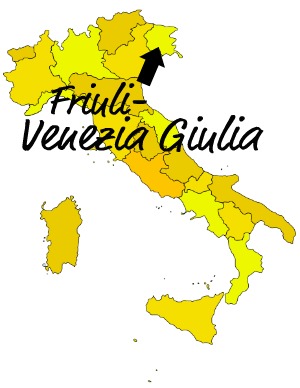 Quick links to Friuli-Venezia Giulia travel resources:
Quick links to Friuli-Venezia Giulia travel resources:
- Where to Stay in Friuli-Venezia Giulia
- What to Do in Friuli-Venezia Giulia
- Where to Go in Friuli-Venezia Giulia
Friuli-Venezia Giulia: Fast Facts
- The English and Italian names of Friuli-Venezia Giulia are identical, and the Italian pronunciation is free|OO|lee vehn|ETZ|yah JOOL|yah.
- The capital city of Friuli-Venezia Giulia is Trieste (pronounced tree|ESS|teh).
- There’s one UNESCO World Heritage Site in Friuli-Venezia Giulia – the archaeological area and the cathedral of the ancient Roman city of Aquileia.
- Friuli-Venezia Giulia borders the Veneto region, as well as the countries of Austria and Slovenia. The region also has a short coastline along the Adriatic Sea.
- Friuli-Venezia Giulia is one of Italy’s five autonomous regions.
- Two languages you’ll hear in Friuli-Venezia Giulia in addition to Italian are Friulano and Slovenian – in the Trieste province Slovenian is common, while in the rest of the region Friulano is so common it’s often on official signs right beside Italian.
- The hyphenation in the name of the Friuli-Venezia Giulia region refers to the two historic regions that combined – Friuli and Venezia Giulia.
- Famous people from Friuli-Venezia Giulia include the founder of illycaffè Ernesto Illy; footballing players and managers Cesare Maldini, Fabio Capello, and Dino Zoff; and novelist Pier Paolo Pasolini.
- People from Friuli-Venezia Giulia are called different things depending on which part of the region they hail from. Those from Friuli are called friulani (that’s the masc. pl. form; others are friulano – masc. sing., friulana – fem. sing., and friulane – fem. pl.), and those from Venezia Giulia are called giuliani (that’s the masc. pl. form; others are giuliano – masc. sing., giuliana – fem. sing., and giuliane – fem. pl.).
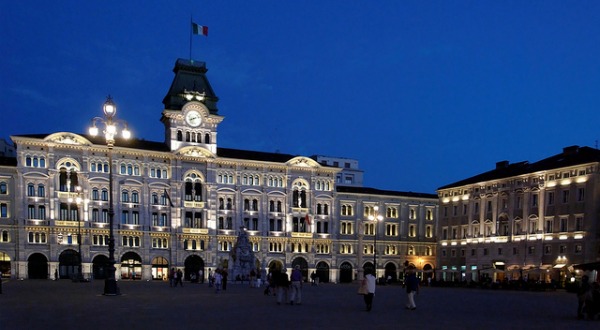
Where to Stay in Friuli-Venezia Giulia
The Friuli-Venezia Giulia region is small, but its landscape is remarkably diverse. There are a few population centers where you’ll find the widest variety of accommodation options, and then there are more rural areas in the mountains where lodging choices are more limited (not to mention less plentiful).
The larger cities like Trieste, Udine, Gorizia, and Pordenone have the most options when it comes to where to stay, and although there’s certainly a high season there are people visiting year-round. On the coast of the region, the accommodation is much more seasonal – during the summers, the hotels along the Adriatic are likely to be full of Italians on holiday as well as tourists.
If you’re sticking to the cities and larger towns that you can access via trains and buses, you’ll find the usual suspects when it comes to hotels and hostels. If you want to get out into the countryside, you’ll find more lodging variety – such as agriturismi, vacation rentals, B&Bs, and even some rifugi (mountain huts). Just remember that if you’re hoping to get out of the cities and towns, you’re going to need a car.
Here are some links to articles about hotels and hostels in some of the cities in Friuli-Venezia Giulia:
- Cheap Hotels in Trieste
- Hostels in Trieste
- Cheap Hotels in Udine
- Hostels in Udine
- Cheap Hotels in Pordenone
- Hostels in Pordenone
- Cheap Hotels in Lignano
- Hostels in Lignano
- Cheap Hotels in Gorizia
- Hostels in Gorizia
- Cheap Hotels in Grado
- Hostels in Grado
- Vacation Rentals in Friuli-Venezia Giulia
- Agriturismo in Friuli-Venezia Giulia
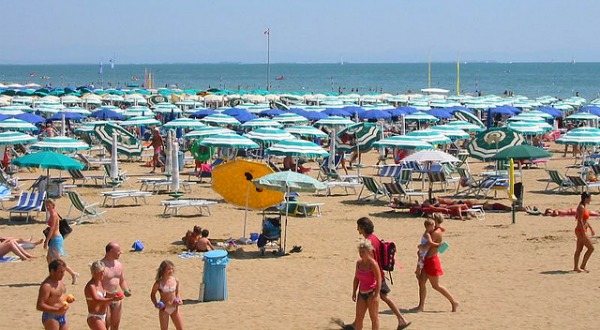
What to Do & See in Friuli-Venezia Giulia
Some of the biggest draws in the Friuli-Venezia Giulia region are its natural resources – the beaches, the mountains, the lakes, and the forests.
Summer brings visitors to the beach in droves, while they head into the mountains for skiing in the winter. Nicer weather also means trips into the mountains and lakes to explore the region’s parks and enjoy the many outdoor activities popular in Friuli-Venezia Giulia – including hiking, mountain biking, and mountain/rock climbing. There are water sports to get into on the coast, too, including sailing and wind-surfing.
Like pretty much every other Italian region, Friuli-Venezia Giulia is also a food and wine region – though foodies will appreciate sampling things they’ll be hard-pressed to find elsewhere. The wines of Friuli-Venezia Giulia aren’t very common outside Italy, and therefore are a real treat to taste while traveling in the region.
The history of the Friuli-Venezia Giulia region also means there are monuments and ruins to explore as well. The region’s UNESCO World Heritage Site is an archaeological excavation of an ancient Roman city, and there are other Roman-era structures in Friuli-Venezia Giulia as well. The region is also home to some gorgeous castles and palaces, including the Miramare Castle in Trieste.
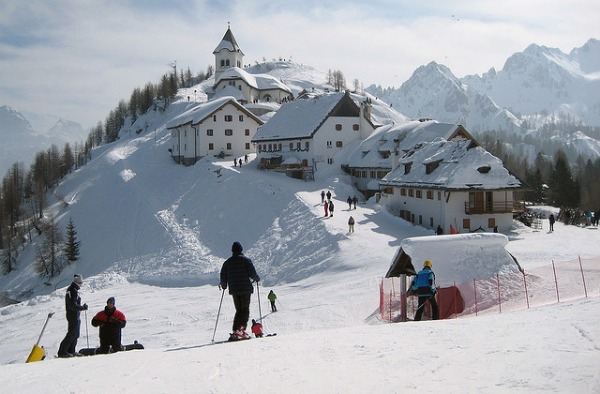
Where to Go in Friuli-Venezia Giulia
Most tourists to the Friuli-Venezia Giulia spend time in Trieste and perhaps at the seaside, and while much of the region is forested and mountainous wilderness there are other cities and towns worth visiting. These places aren’t characteristic of the Italian history we are most used to learning about, and in some places you might feel like you’re in Austria rather than Italy – but that’s part of what makes this region so interesting.
Here are a few of the cities and towns of Friuli-Venezia Giulia you might have on your list:
- Trieste – Capital of Friuli-Venezia Giulia, important port city in region, formerly part of Hapsburg Empire, beautiful architecture along waterfront
- Udine – Historic capital of Friuli region, beautiful historic center and churches, near the UNESCO-designated Aquileia Roman excavations and cathedral
- Pordenone – City near Veneto border, home to 12th-13th century churches and palaces as well as the remains of a Roman villa
- Gorizia – City near Slovenian border, primarily medieval historic center, much of the city was heavily damaged during World War I but has been rebuilt, sights include a castle, cathedral, and 17th century church
- Lignano – Beach resort town on Adriatic, also known as Lignano Sabbiadoro
- Grado – Beach resort and spa town on peninsula between Venice and Trieste, near ancient Roman city of Aquileia
- Palmanova – Small city near Udine, 16th century walls (still intact) form a 9-pointed star pattern
- Tarvisio – Alpine ski resort town near borders of both Austria and Slovenia
- Monte Zoncolan – Popular mountain peak in Alpine part of region, commonly used in bike races, popular ski destination
>> My friend Alessandro lives in the Friuli-Venezia Giulia region, and his photoblog Otturatore frequently features images from his home region – so look around on his site for a glimpse into some of what you can see in Friuli-Venezia Giulia.
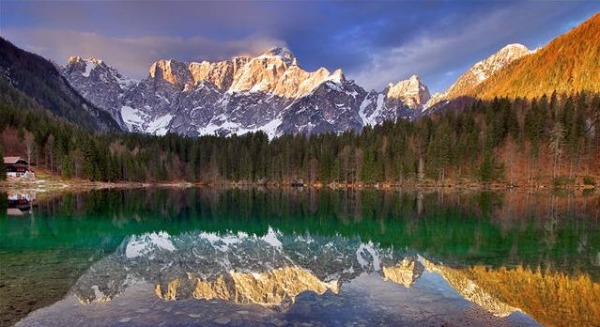
photos, top to bottom, by: bushpig, Otourly, Davide “Dodo” Oliva, generale, malex.org, Pierinut